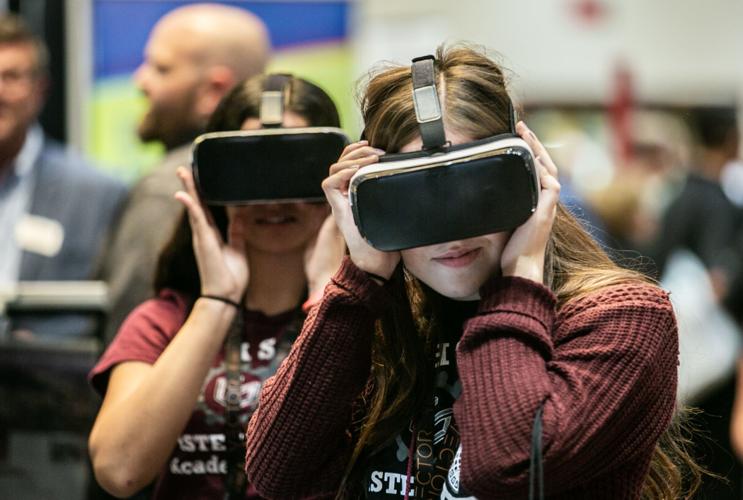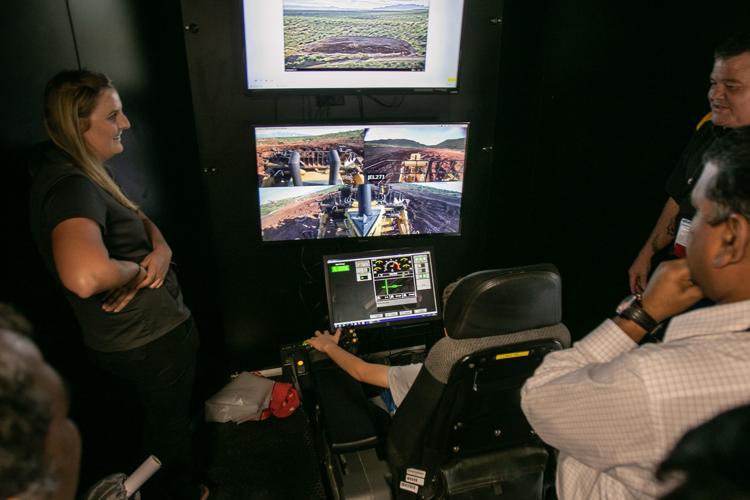New technologies including artificial intelligence and 3-D printing are transforming the aerospace industry — and those flying cars may not be too far off in the future, aviation experts said Wednesday at the 2018 Southern Arizona Tech + Business Expo.
The sixth annual expo held by the Arizona Technology Council attracted more than 400 attendees and more than 60 exhibitors to the Tucson Convention Center.
Exhibits by local tech companies included a Stratocraft stratospheric balloon vehicle made by World View Enterprises, an autonomous Peterbilt truck from TuSimple, and a large drone built by AUV Flight Services.
During a keynote speech, the head of a major trade group for general-aviation aircraft companies said major companies including Airbus and Boeing are investing in additive manufacturing using sophisticated 3-D printers.
The technology, which involves building up layers of metal rather than casting or machining parts, can drastically cut the number of parts and manufacturing steps and produce lighter parts, said Peter Bunce, president and CEO of the General Aviation Manufacturers Association.
“These are big companies investing heavily in additive manufacturing,” said Bunce, whose group represents major makers of non-military and non-commercial aircraft.
Other cutting-edge technologies are being combined to improve navigation, he said.
For example, Bunce said, Tucson-based Universal Avionics, which was acquired earlier this year by Israeli tech giant Elbit Systems Ltd., is working on a visor-like transparent display that combines terrain data, infrared imaging and LED lighting to create a civilian version of the heads-up displays now used on some military aircraft.
Meanwhile, advances in hybrid electric propulsion systems and artificial intelligence is helping drive the development of “air mobility vehicles” — flying cars, Bunce said.
Companies including helicopter giant Bell are investing heavily as engineers work to make lighter, more powerful electric and hybrid engines, as well as develop simplified control systems, to foster the future of personal flying vehicles, he said.
The development of new technologies to handle some tasks now handled manually by pilots could help address a worsening pilot shortage while helping to foster a new generation of aviation workers, Bunce said.
“This is going to attract young people back into our industry because this is cutting-edge, it’s exciting, it’s jazzy,” he said.
During his remarks, retired Boeing Co. executive Mark Van Tine said the aviation industry is going through a technological transformation driven by the ongoing modernization of the National Airspace System by the Federal Aviation Administration.
Satellite navigation began replacing beacon-based navigation in the mid-1980s, but the industry is behind on complying with an FAA mandate that requires all planes operating in controlled airspace to have that capability by 2020, Van Tine said.
“This is a technology challenge, but it’s also a business challenge across the industry,” said Van Tine, formerly vice president of digital aviation for Boeing. “The maintenance companies that install these systems have quite a backlog.”
Other promising navigation technologies include performance-based navigation, which can plot the most efficient flight paths to maximize fuel efficiency and avoid traffic conflicts, he said.
Another speaker said Tucson has the right ingredients to become a significant player in the biosciences.
Paul Laikind, president and CEO of San Diego-based ViaCyte and a pioneer in San Diego’s booming biotech industry, said Tucson has a number of promising drug startups, is supported by the University of Arizona, a strong local industry group in the BioIndustry Association of Southern Arizona, and the support of local government and economic-development agencies.
“I think the elements are all here,” said Laikind. “It really comes down to people.”





